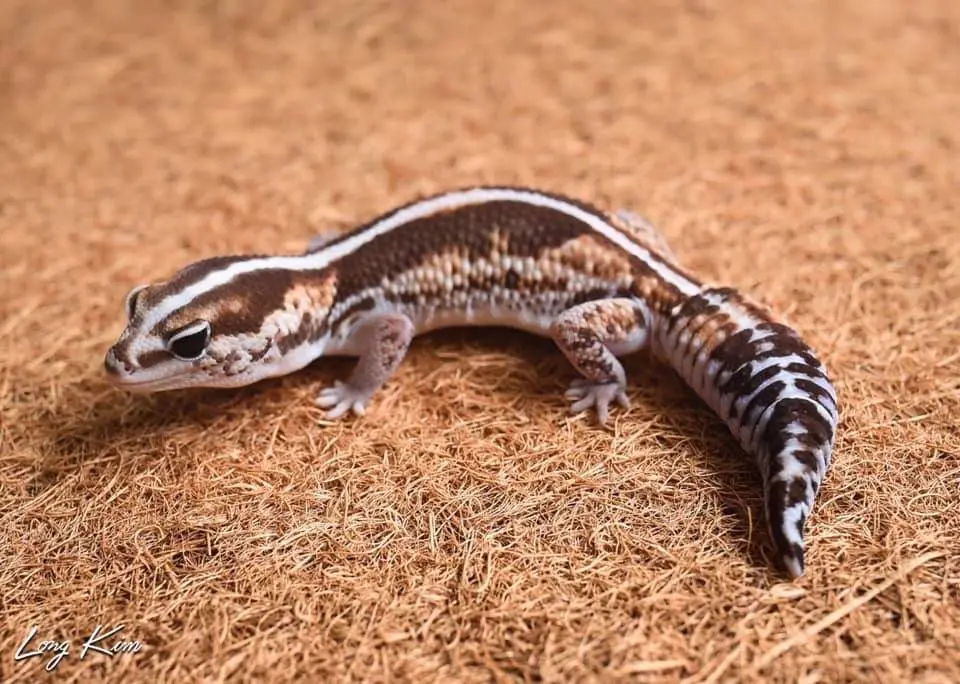The African Fat-Tailed Gecko is a small and easy to care gecko that comes from West Africa. They are ground dwellers, living in a Savannah habitat, surrounded by river beds, rocky hills and scrubland.
These geckos are related to the leopard gecko but have different requirements. We have put together some interesting and fun African fat-tailed gecko facts.
Sizing
The African fat-tailed gecko grows to up to twenty-three centimeters or nine inches. The male tends to be slightly bigger than the female.
Life Span
Living in the safety of an enclosure in your home, these geckos can live for more than fifteen years. In the wild these reptiles can live a healthy life for up to around ten years.
Diet
These geckos are known as insectivores, they eat a complete range of insects from crickets and silkworms to mealworms and more.
Breeding
The female African fat-tailed gecko is able to lay up to five clutches of eggs for each breeding season. Each clutch will have up to three eggs. Eggs take up to seventy days before they hatch.
The time to hatching is determined by the temperatures. Hatchings are up to three inches or seven centimeters when born.
Their Fat Tails
This gecko wags their tail to distract their prey when they are hunting. This is a unique behavior to the African fat-tailed gecko.
The fat tail of this gecko is what sets it apart from the other geckos. The wide and thick shape of the tail has vertical segments that run along the length of the tail.
The tail is used for fat storage, an essential energy reserve. This ensures your gecko can survive for a good few days if there isn’t any food.
They will also voluntarily lose their tails if they feel threatened or are attacked, this confuses their predator long enough for them to escape.
Natural Habitat
These friendly and easy to care for geckos come from West Africa where they dwell on the ground in semi forest areas in the dry Savannas. They are not good climbers, which is always something to bear in mind when setting up African fat-tailed gecko habitat.
Thicker Means Healthier

You can simply look at your African fat-tailed geckos tail thickness to identify their overall health. A thick tail is a sign of a healthy gecko. A thin tail could be due to a lack of food or illness. The tail should be well rounded and plump.
Patterns
The African fat-tailed Gecko has patterns of brown and tan on their tails with pink and off white under their bellies. They sometimes may have a white stripe which will run the entire length of the body.
Eyelids – Blinking
The African fat-tailed Gecko not only has eyelids, but they can blink. The majority of geckos don’t have eyelids and rely on licking their eyes to keep them clean and moist. The African fat-tailed gecko can blink to keep eyes clean.
Life in Captivity
One of these geckos will be very happy to live in captivity. With their small size and docile nature, they are naturally calm. Being slow-moving, they enjoy the privacy and sanctuary of living in captivity, enabling them to thrive in the long run.
It is not uncommon for African fat-tailed geckos to develop their own personalities.